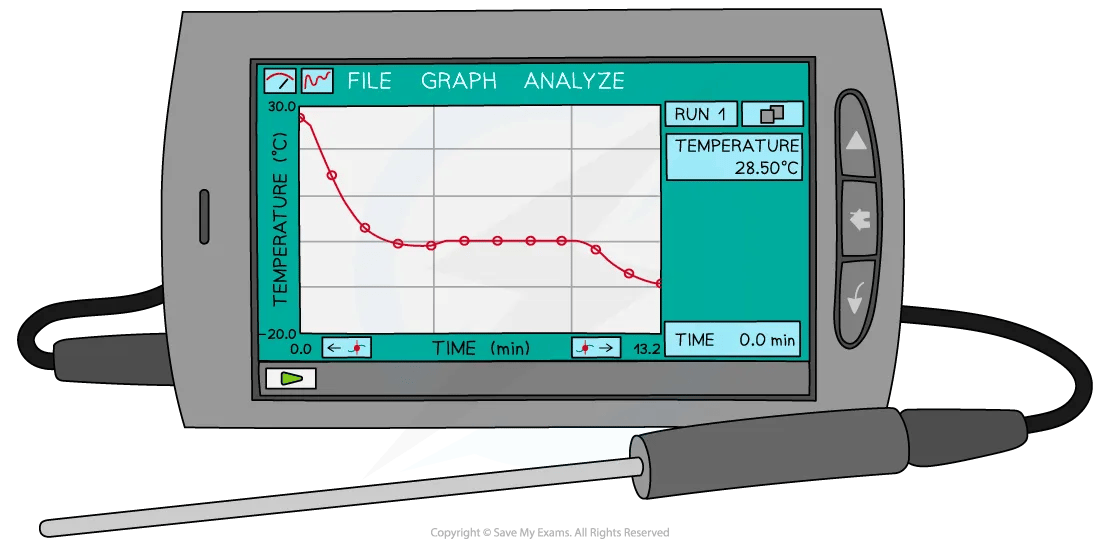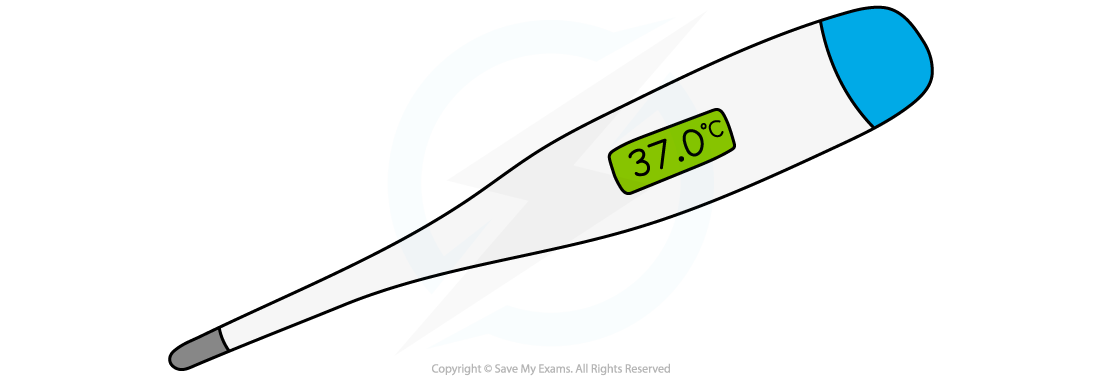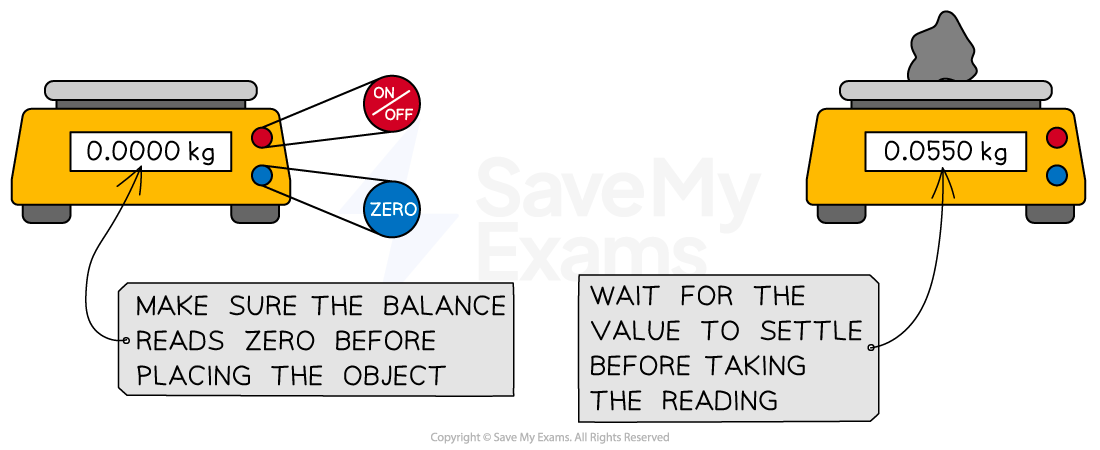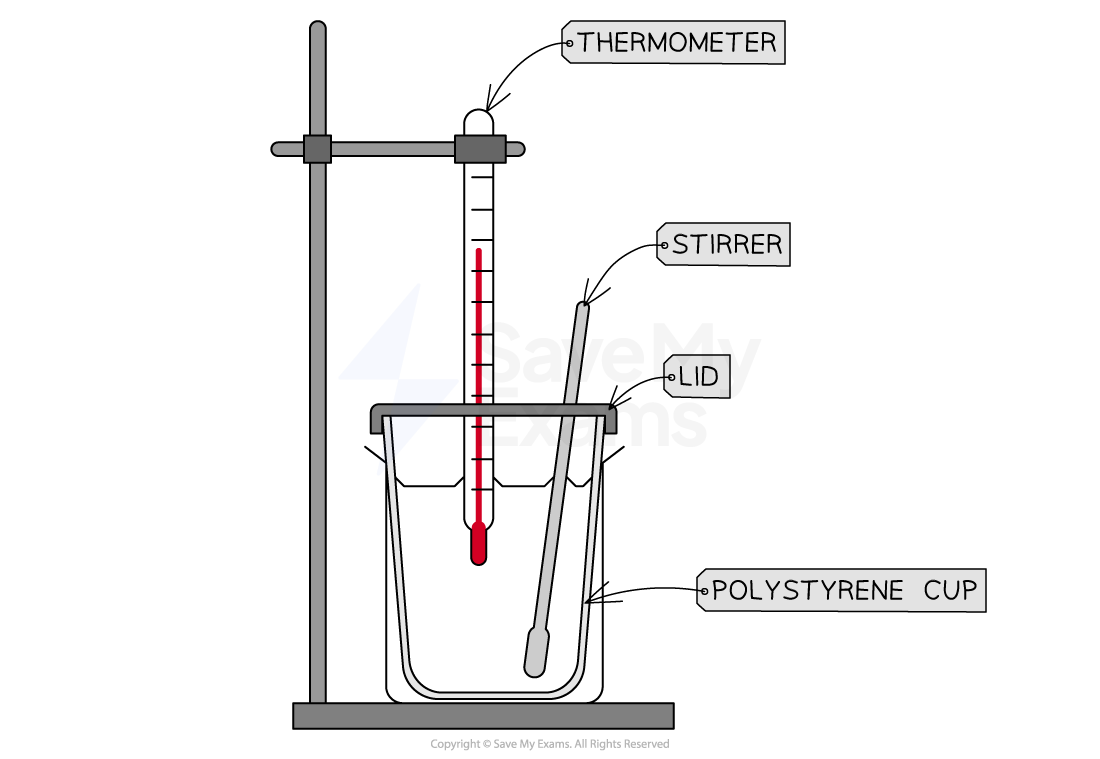Controlling Variables in Physics (DP IB Physics): Revision Note
Controlling variables in Physics
This is the practical application of the 'Controlled Variables' you identified in your design
The main goal of controlling variables is to minimise systematic errors - errors that consistently shift your results in one direction
By keeping all other factors constant, you can:
be more confident that any effect you measure is due to the change in your independent variable
ensure that the results are valid
ensure that you are conducting a fair test
Methods of control
Appreciate when and how to calibrate measuring apparatus
To ensure your data is accurate, the instruments you use must be checked and calibrated
Calibration is the process of checking an instrument's readings against a known, reliable standard and adjusting it if necessary
You should consider calibration for key instruments in your design:
Sensors:
A force sensor should be zeroed with no load on it
A motion sensor should be checked to ensure it accurately measures the distance to a known object
Digital thermometers and sensors
Their accuracy can be checked by placing them in boiling, distilled water (which should read 100.0°C at standard pressure) and a beaker of crushed ice (0.0°C)

A data logger connected to a temperature probe. 
A digital thermometer.
Digital balances
Must always be zeroed (tared) before use to ensure you are measuring the mass of the object only

Ammeters and voltmeters
Should be checked to ensure they read zero when there is no current or potential difference
Appreciate when and how to maintain constant environmental conditions of systems
The conditions in the laboratory can affect your results
Key environmental conditions to control include temperature, pressure, humidity, air currents (draughts), and light intensity
Maintaining temperature
For many experiments, temperature is one of the most important variables to control, as it directly affects other quantities, such as density, gas pressure, and electrical resistance
Controlling air currents
Draughts from windows or air conditioning can cool a substance, causing significant errors in calorimetry experiments
This can be controlled by closing windows or using a draught shield around the apparatus
Sometimes, a variable cannot be perfectly controlled (e.g., ambient room temperature might fluctuate slightly)
In these cases, the best practice is to monitor and record it
You can then discuss its potential impact in your evaluation
Appreciate when and how to insulate against heat loss or gain
In any thermal physics experiment (e.g., measuring specific heat capacity), the biggest source of error is unwanted heat exchange with the surroundings
Insulating the system is crucial for collecting accurate temperature data
Common insulation techniques include:
using a polystyrene cup instead of a glass beaker, as polystyrene is a much better thermal insulator
placing the polystyrene cup inside a larger glass beaker to provide stability and an insulating layer of air
using a lid (e.g., made of cardboard or plastic) with holes for the thermometer and stirrer. This minimises heat loss by evaporation and convection

Appreciate when and how to reduce friction
In mechanics experiments, frictional forces reduce motion and introduce energy losses to heat and sound
Friction can be reduced by
lubricating moving parts, such as pulleys and wheels
adding bearings to prevent components from directly rubbing together
using low-friction apparatus, such as an air track

Appreciate when and how to reduce electrical resistance
In circuit experiments, all components, including connecting wires, have some resistance
This results in unwanted heat transfers to the wires, components and the surroundings
Resistance can be reduced by:
using shorter, thicker wires
keeping the current as low as possible
ensuring connections are secure, as poor connections can add extra resistance
Appreciate when and how to take background radiation into account
In experiments involving radioactive sources, the background radiation must be taken into account
To adjust for background radiation using a Geiger-Muller (GM) tube:
record a background count rate with no radioactive source present
subtract the background count rate from all subsequent measurements to ensure you are only measuring the radiation from the source itself
Worked Example
Research question:
"What is the relationship between the length of a simple pendulum and its period of oscillation?"
Below is how you would identify and control the key variables for this experiment to ensure a fair test:
Amplitude of the swing
Method of control
The pendulum will be released from the same small angle (less than 10°) for every trial, measured with a protractor
Justification
The formula
is based on the small-angle approximation
Keeping the initial angle small and constant ensures this approximation remains valid and does not introduce a systematic error
Friction at the pivot
Method of control
The string will be suspended from a smooth, knife-edge pivot or passed through a glass tube
Justification
Friction at the pivot is a damping force that removes energy from the system, which could affect the period
A smooth pivot minimises this unwanted energy loss
Air resistance
Method of control
The experiment will be conducted indoors, away from any open windows or air conditioning units, using a dense and aerodynamic pendulum bob
Justification
Air resistance is a form of friction that will cause damping of oscillations
Minimising draughts and using a suitable bob ensures its effect is negligible and consistent across all trials
Worked Example
Research question:
"What is the relationship between the length of a constantan wire and its electrical resistance?"
Below is how you would identify and control the key variables for this experiment:
Temperature of the wire
Method of control
A low potential difference will be used across the wire to keep the current small
The power supply will be switched off between readings
Justification:
The flow of current causes Joule heating, which increases the temperature of the wire
As resistance is temperature-dependent, this would introduce a significant systematic error
Keeping the current low and switching off the supply minimises this effect
Cross-sectional area of the wire
Method of control
The same piece of constantan wire will be used for all measurements of length
Its diameter will be measured with a micrometer at several points along its length to check for uniformity
Justification
Resistance is inversely proportional to the cross-sectional area
Using the same wire ensures area
is constant
Checking for uniformity confirms that this is a valid assumption
Contact resistance
Method of control
Crocodile clips will be attached firmly to the wire, and the points of contact will be cleaned if necessary
Justification
Poor connections can add extra resistance to the circuit
Ensuring clean, firm contacts minimises this potential source of error
Examiner Tips and Tricks
Be specific about how you control a variable.
Simply stating "I will reduce friction" is not enough.
You must explain the method: "An air track will be used to provide a near-frictionless surface for the glider."
Don't forget simple controls.
Important controls include:
Using the same piece of equipment (e.g., the same digital multimeter) for all measurements of a certain type
Having the same person read the measurement (e.g., timing the oscillations) to reduce subjective error.
Justify your controls.
For top marks, briefly explain why controlling a particular variable is important for the validity of your experiment.
For example, "The amplitude was kept small to ensure the small-angle approximation, upon which the theory is based, remained valid."
Prioritise your controls.
In your justification, focus your explanation on the variables that will have the most significant impact on your results (e.g., keeping the swing angle small for a pendulum).
This demonstrates insight.

Unlock more, it's free!
Did this page help you?